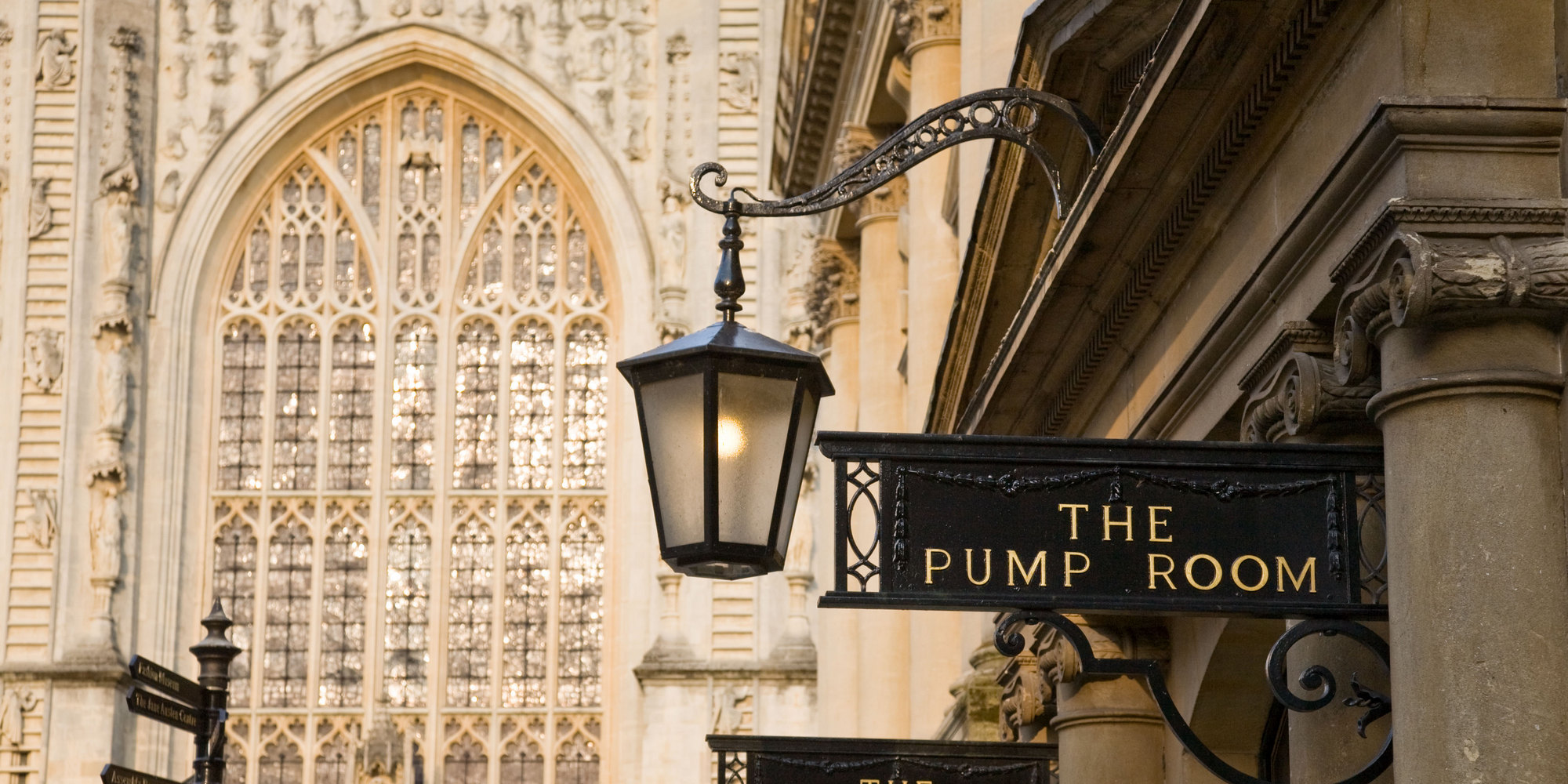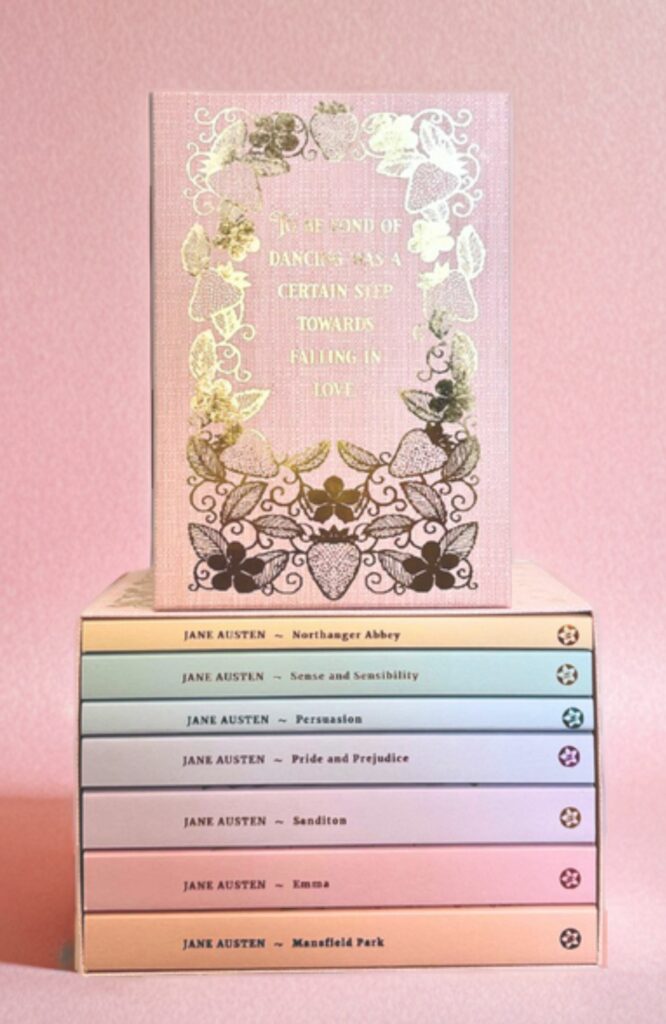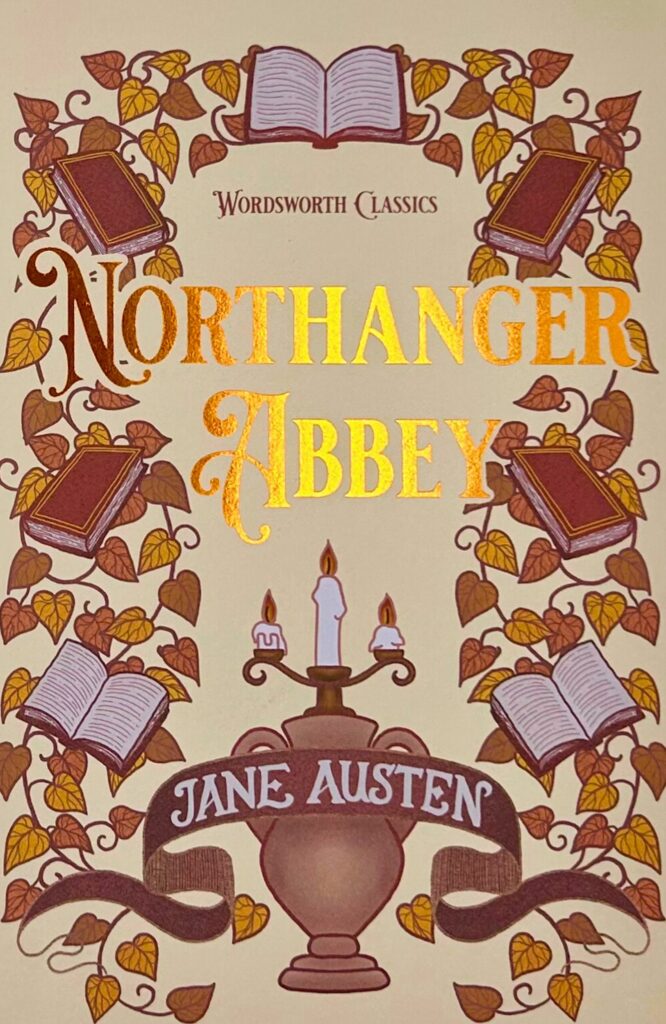
Stephen Carver looks at Northanger Abbey
Stephen Carver looks at Jane Austen’s first novel, Northanger Abbey, which was also the last to be published
Often taken to be a spoof of the gothic writings of Mrs Radcliffe, particularly The Mysteries of Udolpho, Jane Austen’s first (and oddly final) novel is in fact much sneakier than that. It is a novel about novels; that fledgling and modern art form that was to become the preferred literary culture of the ascending English middle class in the nineteenth century, in opposition to the classical tastes of the aristocracy. As Austen notes in a letter to her sister, Cassandra, in 1798, the family are ‘all great Novel-readers & not ashamed of being so’.
Austen read novels for entertainment and edification. She kept serious critical notes on compositional errors to be avoided, and at the same time broadly satirised fashionable literary convention in her juvenile writings, intended for her own amusement and that of her family, to whom she would read them aloud. Her surviving letters indicate a disdain for the simplistic emotionalism and what she called the ‘unnaturalness’ of the then-popular ‘sentimental novel’, in which the moral virtue of the protagonist is signalled by their melodramatic extremes. Beautiful and good heroines, deeply pious and accomplished in all the fashionable arts, weep and swoon uncontrollably, while heroes who are always brave, rich, and handsome prove their honour in excessive displays of compassion and generosity. There are no moral grey areas, and villains are bad to the bone. As Austen wrote in her 1816 ‘Plan of a novel’: ‘Heroine a faultless Character herself, – perfectly good, with much tenderness and sentiment, and not the least Wit’.
The tone of such novels is instructive, and in his critical dismissal of Emma, the actor William Charles Macready compared Austen’s novel unfavourably to Mary Brunton’s hugely popular Self-Control (1810) which does all of the above and which Austen privately described as a book ‘without anything of Nature or Probability in it’. This was because argued Macready, ‘Mrs Brunton’s books have a far higher aim; they try to make us better’, adding that ‘the elevating influence of piety’ and its attendant ‘comforts’ that form the backbone of Brunton’s novels ‘never appear in Miss Austen’s’. And Austen would not deny this, writing to her sister after receiving a similar criticism that ‘pictures of perfection as you know make me sick & wicked’.
Northanger Abbey, then, is the result. Although all of Austen’s mature novels contain literary allusions, nowhere else is the art of fiction so explicit, so central to narrative and plot. This may well be because Northanger Abbey is Austen’s first serious novel and is thus something of a bridge between her juvenile satires, which exaggerated literary tropes until they became absurd, and the more sophisticated social observation of her later work. This can also be seen in her chosen target, the gothic novel. In many ways, the gothic romance was an extension of the novel of sensibility, in which virtue remained absolute, now overcoming vice, and terror was added to the emotional repertoire. The genre was highly popular at the turn of the century when Northanger Abbey was originally conceived and written, which Cassandra later noted was between 1798 and 1799.
Austen’s first novel was prepared for publication by the London bookseller Crosby & Co in 1803, not long before her twenty-eighth birthday, the gothic fad still at its height. The author received a fee of £10 for the work. The publisher then inexplicably sat on the manuscript – perhaps out of regard for Mrs Radcliffe – refusing to either publish or return copyright to Austen until they sold it back to her brother, Henry, in 1816, for exactly what they paid for it. Austen revised the text but died before it saw print. In his ‘Biographical Notice of the Author’ appended to the first edition, Henry adopted an oddly gothic tone himself, writing that ‘the hand which guided that pen is now mouldering in the grave’. Henry arranged its publication by John Murray, and it was released in four volumes with Persuasion at the end of the year, although the date of the first edition is 1818, notably also the year Frankenstein was published. These two remarkable if very different novels can be taken together as a sea change in the gothic tradition, marking the end of the era of the eighteenth Radcliffian romance, and heralding the Victorian tale of terror, which would be much more psychological, urban and contemporary.
Catherine’s enthusiasm for ‘horrid novels’ is a running gag throughout the first half of the story, which takes place in Bath. They are a point of connection with her new friend, Isabella Thorpe, and the two young ladies enthusiastically discuss The Mysteries of Udolpho in the famous Pump-room just as girls today might rave about the Twilight saga or The Chilling Adventures of Sabrina on Netflix. Isabella even prepares a reading list to hold them once they’ve demolished Udolpho and Radcliffe’s follow-up novel, The Italian:
‘I will read you their names directly; here they are, in my pocketbook. Castle of Wolfenbach, Clermont, Mysterious Warnings, Necromancer of the Black Forest, Midnight Bell, Orphan of the Rhine, and Horrid Mysteries. Those will last us some time.’
‘Yes, pretty well; but are they all horrid, are you sure they are all horrid?’
It was generally supposed that these lurid titles were all Austen’s invention until Montague Summers and Michael Sadlier tracked down the original publications in 1920. With the exception of Radcliffe, and a nod to The Monk by her rival, Matthew Lewis, the contemporary targets of Austen’s satire had been completely forgotten.
But it is to Udolpho that the novel returns again and again. Catherine is enchanted at the thought of a gothic ruin when invited to stay at Northanger Abbey, the family seat of her new friends, brother and sister Henry and Eleanor Tilney: ‘Its long, damp passages, its narrow cells and ruined chapel, were to be within her daily reach, and she could not entirely subdue the hope of some traditional legends, some awful memorials of an injured and ill-fated nun’. The evocative name, however, gives way to a single-storey building containing modern furniture and a new build added to the back, and ‘she found herself passing through the great gates of the lodge … without having discerned even an antique chimney’.
Henry, too, has read The Mysteries of Udolpho, and freely admits it’s a real page-turner: ‘when I had once begun it, I could not lay down again; I remember finishing it in two days – my hair standing on end the whole time.’ It is his enthusiasm for novels that shows him to be a better man than his rival suitor, John Thorpe, who declares ‘I never read novels; I have something else to do’ before critiquing several that he clearly knows nothing about. Henry, like his author, believes that ‘The person, be it gentleman or lady, who has not pleasure in a good novel, must be intolerably stupid.’
Being, however, a ‘natural’ hero – when he first appears he is described as ‘not quite handsome’ – and therefore a little bit pompous and at times too clever for his own good, Henry can’t help teasing Catherine about her preconceptions as they approach the abbey for the first time:
‘And are you prepared to encounter all the horrors that a building such as ‘what one reads about’ may produce? Have you a stout heart? Nerves fit for sliding panels and tapestry?’
He then delivers a wonderful pastiche of a standard Radcliffian plot, all in the second person, casting Catherine as the archetypal gothic heroine, lodged in a gloomy chamber with an ancient and mysterious locked chest, and tapestries that move more violently than the rest during apocalyptic thunderstorms, revealing a vaulted room in which:
‘…by touching a secret spring, an inner compartment will open – a roll of paper appears – you seize it – it contains many sheets of the manuscript – you hasten with the precious treasure into your own chamber, but scarcely have you been able to decipher “Oh! Thou – whomsoever thou mayst be, into whose hands these memoirs of the wretched Matilda may fall” – when your lamp suddenly expires in the socket and leaves you in total darkness.’
Catherine is gripped, until Henry trails off, unable to keep a straight face any longer. ‘But this will not happen to me,’ she confidently – and misguidedly – reflects, ‘I am sure.’
But this is no mere burlesque of Mrs Radcliffe, beautifully done though these passages are. Rather, Austen has a serious point to make about fiction and reality, and not just literary fiction but the fiction of social construction, as represented in novels like Self-Control and in the stifling world of provincial middle-class society. In Catherine’s passion for gothic novels, the distinction between fact and fiction implicit in Northanger Abbey seems clear, but while presenting it as such Austen is archly destabilising it. Catherine is a heroine who is not a heroine. Her family is free of tragedy and secrets, and Catherine is ‘almost pretty’ being a bit of a tomboy, pale, lanky and awkward, with strong features and little aptitude or inclination for languages, music or fine art. She is, says her mother, ‘a sad little shatter-brained creature’. There was, says her author, ‘by nature nothing heroic about her’. That is, Catherine, like Henry, is ‘natural’ (realistic) rather than ‘heroic’ (unrealistic). Nonetheless, this is a novel, and Austen refers to Catherine as her ‘heroine’ throughout, admitting early on that ‘Something must and will happen to throw a hero in her way’ while constantly dismantling expectations. Removed from her familiar environment, for example, as all gothic/sentimental heroines must be, nothing more dramatic happens on her journey to Bath than her guardian, Mrs Allen, fearing she has left her clogs at an inn (which it turns out she hasn’t).
In the most famous, yet surprisingly brief episode in the novel, Catherine does fancy herself a gothic heroine, unconsciously following the narrative trajectory of Henry’s Radcliffian story, while a storm, indeed, rages and her candle goes out. And although ever gothic signifier turns out to be perfectly ordinary – the found manuscript is an old laundry list – she still gets herself into such a state that she perceives Henry’s irascible father, the formidable General Tilney, to be a Montoni-like villain at the heart of a terrible conspiracy. This is quickly dismissed by his son:
Dear Miss Morland, consider the dreadful nature of the suspicions you have entertained. What have you been judging from? Remember the country and the age in which we live. Remember that we are English, that we are Christians. Consult your own understanding, your own sense of the probable, and your own observation of what is passing around you. Does our education prepare us for such atrocities? Do our laws connive at them? Could they be perpetrated without being known, in a country like this, where social and literary intercourse is on such a footing, where every man is surrounded by a neighbourhood of voluntary spies, and where roads and newspapers lay everything open? Dearest Miss Morland, what ideas have you been admitting?”
Henry’s reputation has been frequently read by literary critics as signalling the divide between English Enlightenment rationalism, which is modern, Christian and empirical, the basis of both empire and civilisation, its objectivity reflected in the rise of the Realist novel, and the gothic anti-realist text, which is romantic and superstitious, and set in medieval and therefore Catholic Europe. The satire seems well in place. Life is not like a gothic novel. In fact, most of the time, thankfully, life is pretty safe and boring, isn’t it?
Well, not quite…
Like a true gothic heroine, Catherine will face a series of trials and ordeals, just as her author continues to assiduously insist that she will not. When Henry’s older brother, Captain Frederick Tilney, is introduced in Bath, for instance, the narrator assures us that ‘He cannot be the instigator of the three villains in horsemen’s greatcoats, by whom she will hereafter be forced into a travelling-chaise and four, which will drive off with incredible speed’. He does, however, turn out to be trouble, but in a more socially awkward way, much as Catherine will later be forced into a travelling-chaise and four when she is unceremoniously ejected from the abbey by General Tilney when she faces a real crisis. On her last night there, her chambers do become a tortured space, but without a hint of the supernatural:
That room, in which her disturbed imagination had tormented her on her first arrival, was again the scene of agitated spirits and unquiet slumbers. Yet how different now the source of her inquietude from what it had been then – how mournfully superior in reality and substance! Her anxiety had a foundation, in fact, her fears in probability; and with a mind so occupied in the contemplation of actual and natural evil, the solitude of her situation, the darkness of her chamber, and the antiquity of the building were felt and considered without the smallest emotion … without curiosity or terror.
Northanger Abbey is therefore Catherine’s coming-of-age story – the author Val McDermid has gone as far as to suggest that it is ‘Young Adult’ – in which she must learn to survive away from home and negotiate the elaborate gender politics and courtship rituals of the ball and the Pump-room, where people are ranked according to good looks and fortune, and deception and misconception are rife. (Catherine and General Tilney both hold two different views of each other at various points in the novel, positive and negative, all of which turn out to be wrong.) Along the way, she learns that people rarely mean what they say, to the point of downright duplicity, while plain speaking is an outrage to social convention and that the most innocent of gestures can carry complex cultural codes. Most importantly, she discovers that it is not just gothic villains who can be vindictive and cruel. And although she learns from this experience and grows in a deliberately hasty and comically artificial denouement, Henry’s depiction of contemporary England ‘where every man is surrounded by a neighbourhood of voluntary spies, and where roads and newspapers lay everything open’, in fact, sounds rather ominous. Although this assertion apparently sweeps away the supposedly imaginary fears of the gothic novel, as Austen would have known from experience, the snooping and gossip of Little England could be just as brutal, all the more so in fact – as Catherine discovers – for having very real consequences.
But Henry is the ‘hero’; another fictional character Austen makes it clear she is manipulating as a novelist throughout. He is no more the voice of reason in the narrative than is Catherine, the dotty Mrs Allen or the avaricious and protean Isabella. If he and his creator share an accord, it is that it is not what people choose to read that is the problem, but how they read it. The implication of his speech to Catherine – leaving aside those ‘voluntary spies’ – is that there is nothing wrong with liking a good horror story (as he obviously does) as long as it does not influence one’s opinions outside the world of the text, ‘your own sense of the probable’. Austen has therefore laid the devices of the novelist bare, in an ironic masterclass in commercial fiction writing, with the proviso that it is just as silly to look to a novel for moral education as it is to believe in dark fantasy. She, therefore, concludes by letting her readers draw their own conclusions, playfully turning the idea of an ‘instructive’ novel on its head: ‘I leave it to be settled by whomsoever it may concern, whether the tendency of this work be altogether to recommend parental tyranny or reward filial disobedience’.
The true moral is, of course, nothing of the sort. Rather, it drives a stake through the heart of the sentimental novel as much as it does the old gothic romance. It is a plea for both realism and emotional intelligence, in both literature and in life. In the first place, people are not perfect, and that’s what makes us interesting, as well as authentic in a fictional narrative. And on the subject of fiction, social conventions are also a human invention, another narrative, not a natural state. Finally, enjoy your novels and let the imagination roam free by all means, but not at the expense of one’s intellectual judgement or, for that matter, evidence and facts. In short, melodrama and horror are not good manuals for living. Treat them as such, and disaster will surely follow; you have been warned.
Whether or not this is a message that would have satisfied the moral values of Mr Macready, we shall never know.
Image: The Pump Room, Bath Credit: Anthony Brown / Alamy Stock Photo
Our Collector’s Edition of Northanger Abbey forms part of the complete collection of Jane Austen’s novels in this series, retailing for £6.99
Books associated with this article

The Complete Jane Austen Collection
Jane Austen

Northanger Abbey
Jane Austen
